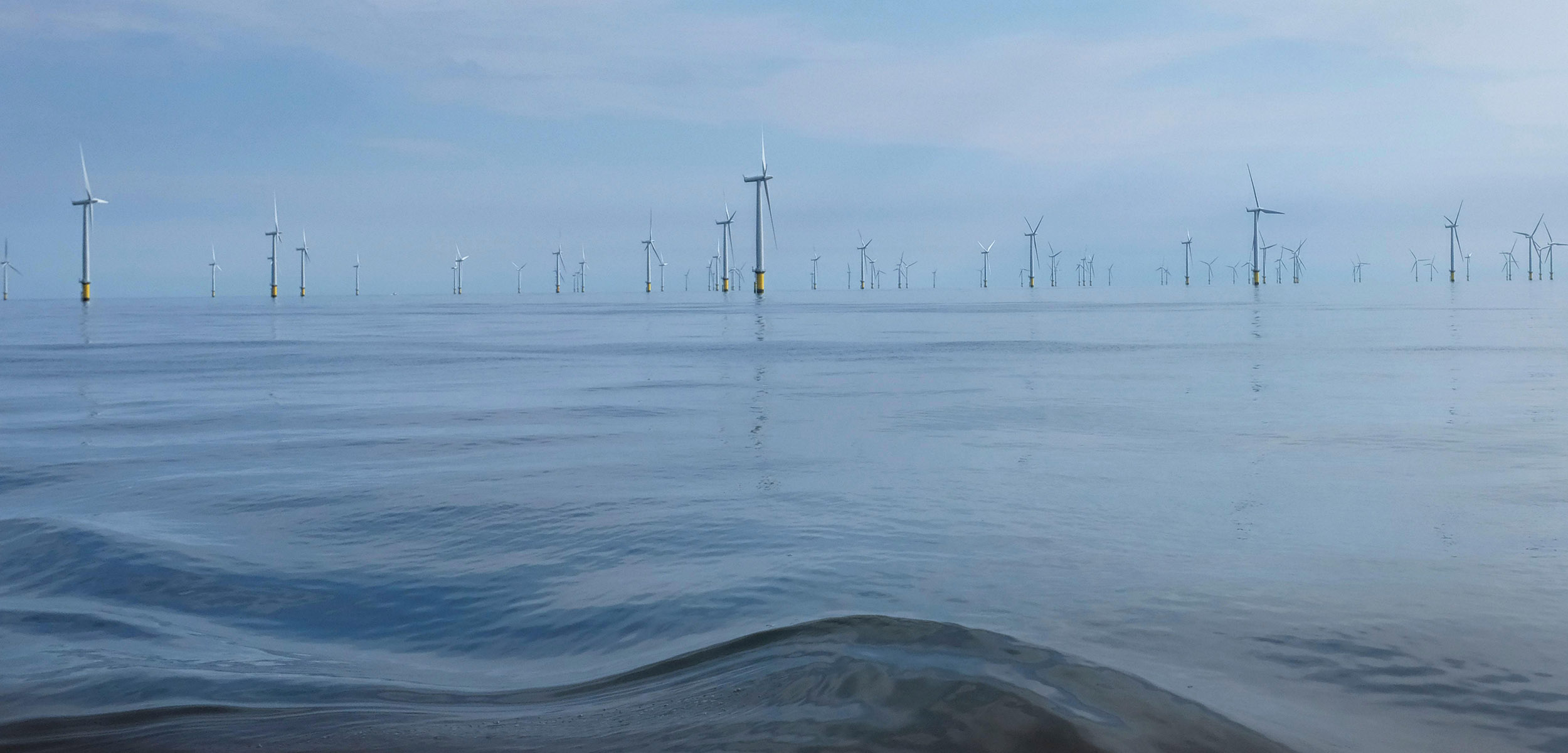Scientists Eye Offshore Wind’s Effects on the Atlantic’s Crucial Cold Pool
Scientists are rushing to understand how New Jersey’s planned offshore wind farms might alter the mid-Atlantic cold pool, home to some of the most valuable shellfish fisheries in the United States.
Article body copy
Every year, as the surface water temperature off the United States’ mid-Atlantic coast rises steadily from late spring through the summer, a pocket of uncharacteristically cool and crisp water gets trapped at the bottom of the ocean. Packed with nutrients, this thick band of cold water, known as the mid-Atlantic cold pool, is a vital home for shellfish species like surf clams and sea scallops. Extending at its seasonal peak from Nantucket, Massachusetts, to Cape Hatteras, North Carolina, the cold pool fosters a diverse ecosystem ranging from small algae to migratory fish—and some of the most valuable shellfish fisheries in the United States.
The mid-Atlantic cold pool has been a reliable oceanographic feature for more than 1,000 years. Nowhere else in the world can you find such a large summer temperature difference between the water at the ocean’s surface and at the bottom. Now, however, two pressures have scientists worrying about whether the cold pool will persist. The first is no surprise: climate change. Over the past five decades, climate change has destabilized the cold pool, causing it to warm and shrink. Compared with 1968, the cold pool is now 1.3 °C warmer and has lost more than one-third of its area.
The second concern is less intuitive and less certain. In 2023, the US federal government approved plans to install 98 wind turbines off the New Jersey coast, covering an area of more than 300 square kilometers. Construction is slated to start this fall and the completed project should have a capacity of about 1,100 megawatts. That’s enough to power roughly 380,000 homes. Yet anchoring so many turbines to the seafloor could have unexpected consequences for the temperature stratification that keeps the cold pool intact. That’s why Travis Miles, a physical oceanographer at New Jersey’s Rutgers University, and his colleagues are investigating how the budding wind farm might affect how and when the cold pool forms and breaks down.
Their concern stems from previous research, in which scientists studying Germany’s DanTysk offshore wind farm in the North Sea found that wind turbines can cause turbulence that mixes the water. The extent of this mixing depends on the size of the wind farm and how fast ocean currents are moving past the turbines. The big question, says Miles, is whether New Jersey’s wind turbines will affect ocean circulation enough to hinder the cold pool’s stability. The cold pool forms every spring and naturally breaks down every fall. But an early or late breakdown could have important implications for marine species—and the fisheries that depend on them, says Miles.
Of course, mixing isn’t necessarily a bad thing. Previous research on wind turbines installed on the continental shelf off the United Kingdom shows that turbine-enhanced mixing can boost the availability of nutrients and dissolved oxygen. In that sense, wind farms can make the surrounding sea more productive and support bigger fish stocks, says Thomas Rippeth, an oceanographer at Bangor University in Wales who co-led that research.
So far, Miles and his colleagues are still in the midst of their research and can’t definitively say what will happen to the cold pool when New Jersey’s new offshore wind farm gets going. However, their initial analyses suggest the cold pool should be fine—at least in normal conditions. Off the mid-Atlantic coast, the scientists say, the stratification that prevents warm and cold water from mixing is particularly strong and stable.
“We’re pretty confident that tides and regular ocean currents moving past turbines in the mid-Atlantic are only going to have a mild impact,” says Miles.
But that’s in normal conditions. In the event of an intense storm or a northeaster, the situation could change—though in what way, the scientists don’t yet know.
New Jersey’s offshore wind plans have been mired in controversy and litigation—prominently by fossil fuel–industry funded opposition efforts. Miles worries that an overabundance of caution or fear of potential impacts, including on the cold pool, might slow down the development of renewable energy.
“We all need to grapple with doing the research as fast and as best we can … so we can make actionable decisions in a timescale that matters for climate change,” he adds.
Rippeth agrees that more research is needed to assess how climate change and offshore wind, together, could affect the cold pool. “But it’s quite clear that climate change is far more damaging than installing wind farms,” he says. “I don’t think any scientist would argue with that.”
This story was produced with the support of CivicStory and the New Jersey Sustainability Reporting project.

